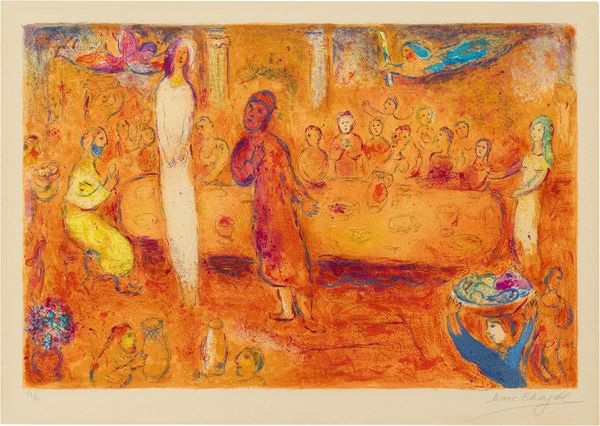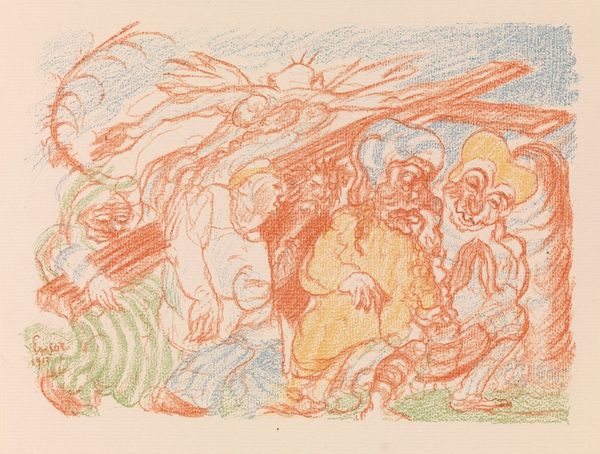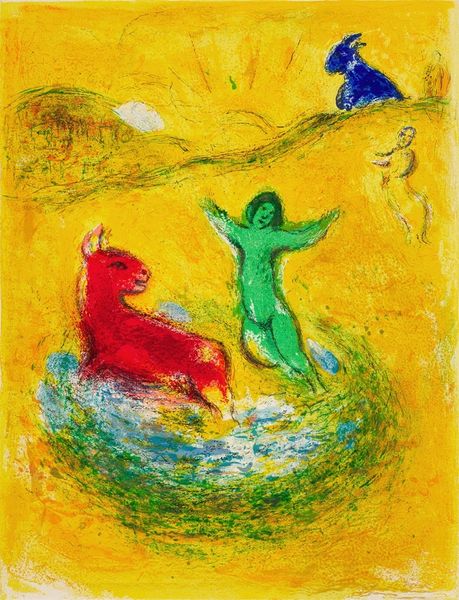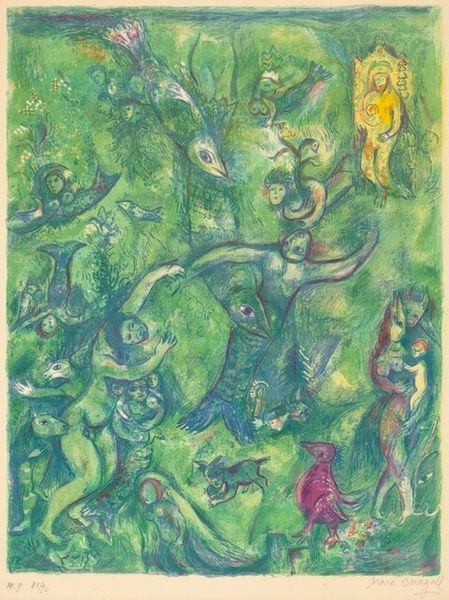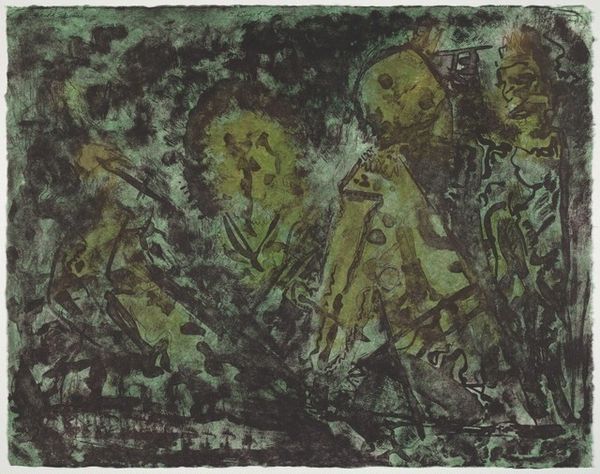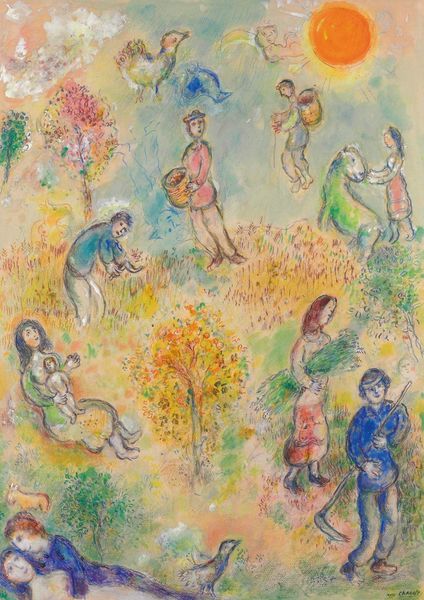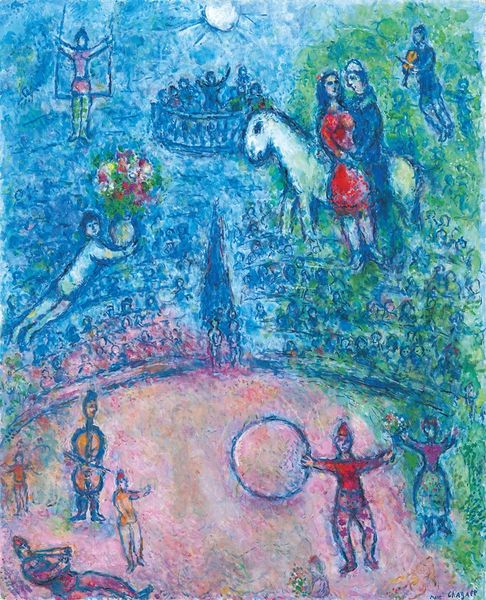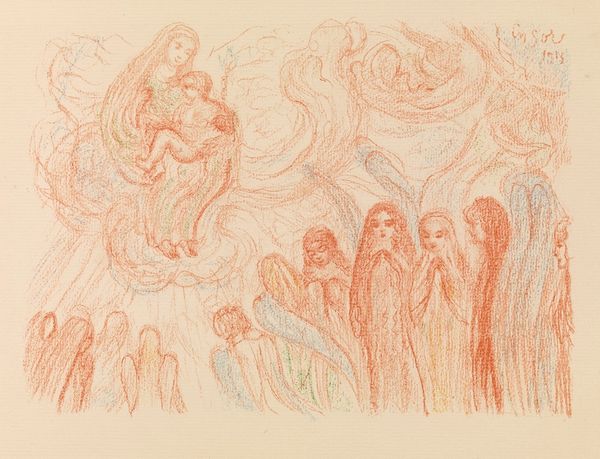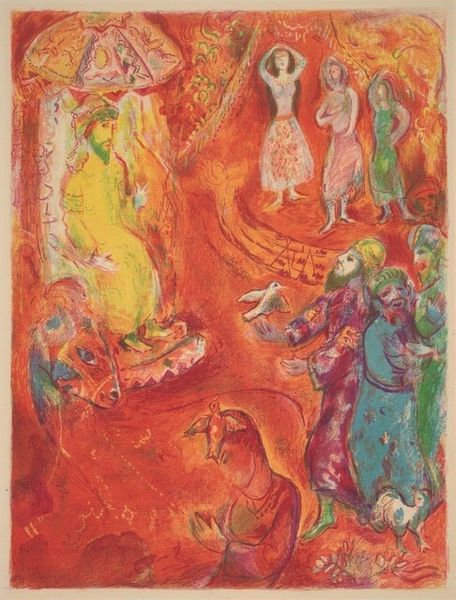
Copyright: Modern Artists: Artvee
Editor: This is "Wedding Feast in the Nymphs' Grotto" by Marc Chagall, created in 1960, using watercolor. The scene feels like a dreamscape with vibrant colors and figures floating around. What's your take on this, looking at it as a cultural historian? Curator: It’s fascinating how Chagall intertwines personal experience and universal themes like love and community. "Wedding Feast" immediately calls attention to the ritualistic role of art, representing joyous communal celebration, but also how access and cultural understanding could influence or prohibit its appreciation, specifically within the socio-political environment of the 1960s. How might its idyllic depiction of community resonate with viewers of different backgrounds? Editor: I see that! It also feels very theatrical to me. Curator: The theatricality could mirror a desire to share universal joy, to offer imagery celebrating communal union that may contrast societal realities. The way Chagall positions the 'nymphs' evokes classical references filtered through his unique perspective. How do you think institutions contribute to defining which aspects of an artwork get the most attention? Editor: I hadn't really thought about that. Well, museums highlight specific narratives based on the curators' or the institution’s biases and perspectives, sometimes overlooking other equally valid interpretations. What narratives do you feel are at play here? Curator: Beyond the immediate sense of celebration, there’s a layer discussing Jewish identity, Expressionism, and modernism. Do you feel this particular piece aligns more to universal festivity or carries specific cultural weight due its provenance? Editor: I think the piece's power is precisely in its balancing act; it feels incredibly personal and rooted in a specific background but still communicates these very human and relatable themes of love, togetherness, celebration through weddings... it really hits that sweet spot! Curator: Agreed. Perhaps it reflects the societal aim of cultural institutions: to engage a dialogue between universal understanding and individual or niche cultural experiences that define modernism’s accessibility. Editor: Thanks, I learned a lot! Thinking about cultural context adds a whole new layer of depth.
Comments
No comments
Be the first to comment and join the conversation on the ultimate creative platform.

